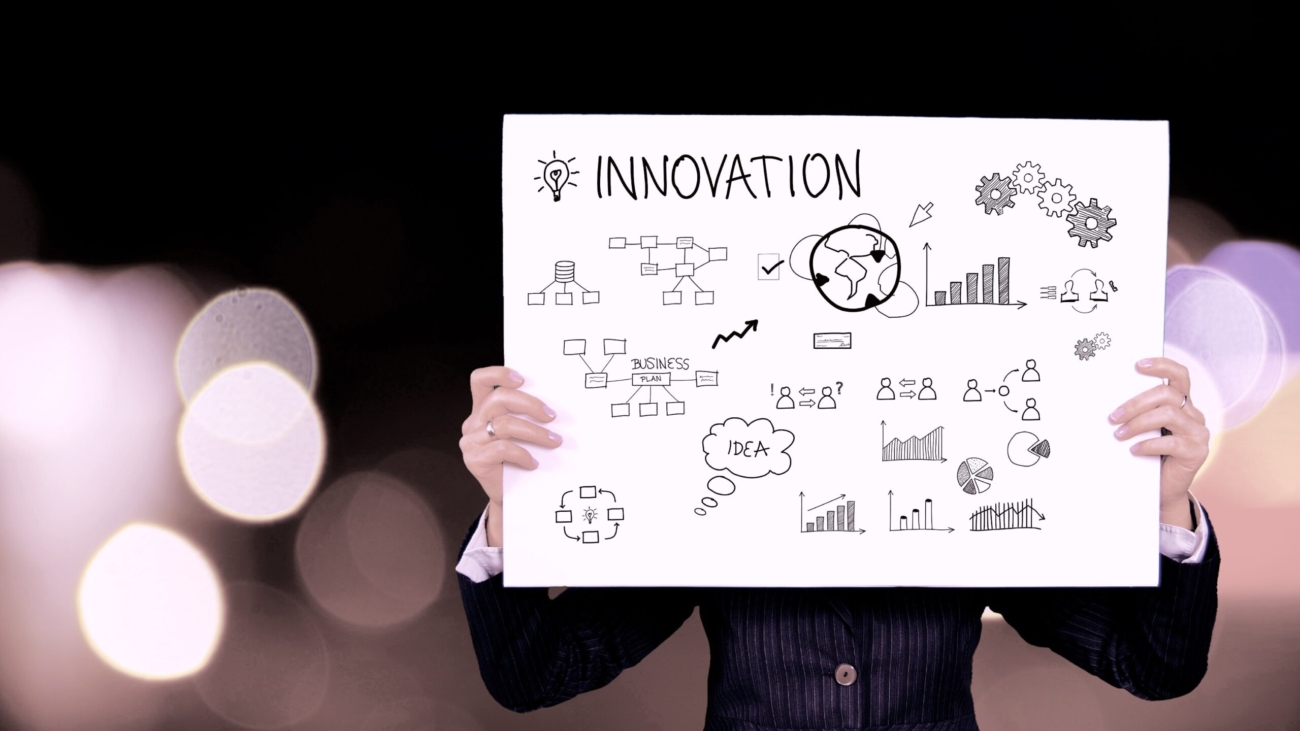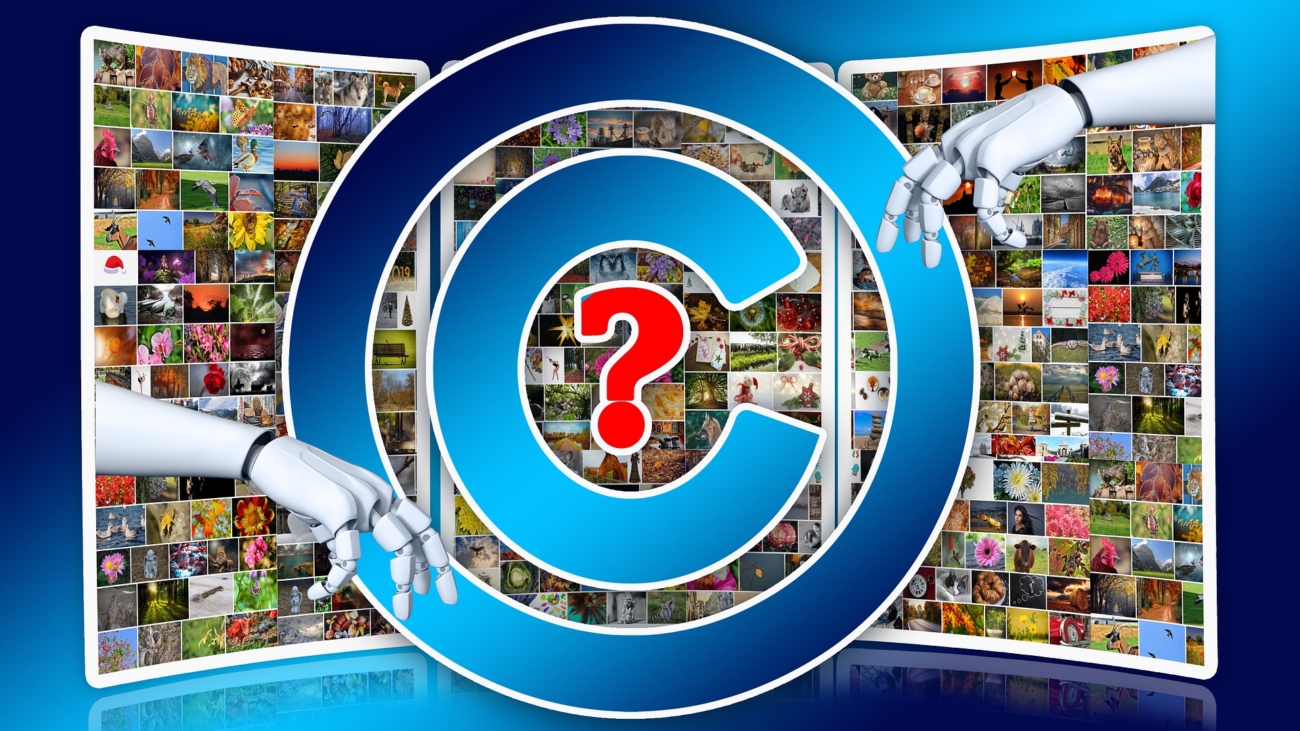AI Startups and Innovation: Pioneering the Future of Technology
Table of Contents
- Introduction
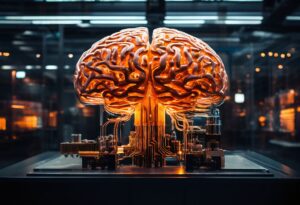
- Rise of AI Startups
– 2.1 Historical Context and Evolution
2.2 Key Drivers Behind the AI Startup Boom
– 2.3. The Role of Venture Capital and Investment
- AI Startups: Key Sectors and Applications
– 3.1 Health and Biotechnology
– 3.2. Finance and sales
– 3.3. Sales and E-commerce
-3.4. Shipping and Logistics
** 3.5. Education and EdTech
- Novel Approaches and Technologies
4.1. Learning of Machines and Richer –
– 4.2. Natural Language Processing
-4.3. Computer Vision
– 4.4. Robotics and Automation
- Success Stories: Promising AI Startups
– 5.1.
-5.2. DeepMind
– Contexts : 5
– 5.4.
- Products: Sense
- Challenges of AI Startups
– 6.1. Technical and Developmental Challenges
– 6.2. The competition and the differentiation of
6.3 State Regulatory and Ethical Issues
– 6.4. Data Privacy and Security
- Scaling AI Startups: Go-to-Market Strategies – 7.1. Team Building and Culture Development
– 7.2. Raising Finance and Investment
– 7.3. Navigating Market Entry and Expansion
– 7.4. Collaborations and Partners
- The Future of AI Startups and Innovation
– 8.1. Emerging Trends and Technologies
– 8.2. How AI is Impacting Traditional Fields
– 8.3. Ethical Considerations and Responsible Innovation-END
- Conclusion
—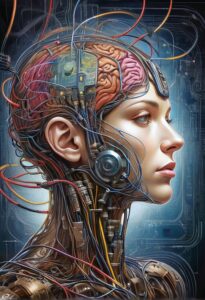
- Introduction
Artificial Intelligence (AI) has been advanced as one of the most transformational technologies of the 21st century. Improving healthcare, revolutionizing finance, altering commonplace retail and transport interfaces—there are simply no bounds to this far-reaching technology. The next big wave of innovative AI startups, driving disruptive innovation with rapid advances in AI technologies, is required to maintain the possibilities.
The paper explains the emerging, dynamic world of AI startups and innovation: the rise of AI startups, the millennial revolution in AI innovation, the sectors where critical technologies are seeing rapid development, features on how pioneering technologies are enabling successes, and the main challenges that these startups face. Strategies to scale these startups, moreover, will be discussed, and a general vision of how developments in AI innovation could stand in not.
- The Emergence of AI-based Start
2.1. Historical Background and Development
Even though the concept of AI goes back to the mid-20th century, beforehand, research work was into the definition of symbolic reasoning and a system of rules: it was the rise of machine learning and, in particular, deep learning that brought tremendous progress to AI.
Initiated from the early 2000s with the growth of big-data collections along with computational power boosted smart algorithms, this furthered AI. with the advent of big data explosion along with improvements in computational power and advanced algorithms, It was in the early 2000s. The development initiated technologies, like GPUs, for training the workability of in-depth models efficiently, hence bringing about further contributions linked to the processing of pictures and the ability of humans to recognize speech.
The real boom in AI startups emerged around the middle years of 2010 when such democratized innovations of tools and infrastructure could make access to AI tools and frameworks enabled to start using AI to solve all kinds of problems within different industry niches with tools and viable solutions that were previously well-nigh impossible.
2.2. Key Drivers that Powered the AI Startup Boom
A few factors helped initiate the boom of AI startups:
Availability of Data: The proliferation of digital data coming from various sources, social media, sensors, and online transactions, creates a very rich resource for training AI models.
– Next-Generation Technologies: improved hardware, particularly GPUs and TPUs (Tensor Processing Units), improved cloud computing, and reduced barriers to entry for developing and fielding AI technologies.
– Open Source Ecosystem: Open-source AI frameworks like Tensor Flow, Py Torch, and Sci kit-learn have further accelerated this process of innovation by making a number of tools and libraries easily available to all developers.
– Investment and Funding: Venture capital and private equity firms have increased their investment in AI startups, looking at their disruptive potential across industries that could yield high returns.
2.3. How Venture Capital and Investment Drive
Here is where venture capital comes in handy to grow AI startups. With VC firms on board, the needed capital to be the building tech, scale up, and expand to new markets.
Investment in startups dealing with artificial intelligence has been rising fast of late; several start-ups developing cutting-edge technologies have successfully grown, sometimes surpassing unicorns. This has then enabled startups to attract and retain top talent, drive aggressive growth strategies, and invest heavily in innovation—that is, their research and development areas.
Yet, a high level of competition for funds and the fast pace of technological change calls for the urging necessity of continually bringing out novelties from new businesses and demonstrating a value proposition to back up investment.
- Key Sectors and applications of AI Startups
3.1. Health Care and
AI is transforming health by bringing on board the more potential accurate diagnosis, the facilitation of personalized healing plan, and improving patient outcomes. AI startups in this sector are banking on machine learning and data analytics in improving many dimensions of health care.
– Diagnostics: AI is right now diagnosing medical images, from X-rays to MRIs, so that the underlying conditions, particularly cancer and cardiovascular diseases, are recognized and diagnosed at a very high accuracy. For instance, startups like PathAI are developing AI tools to help pathologists in the diagnosis of diseases from tissue samples.
Drug Discovery: AI is being applied in numerous ways to expedite drug discovery. Loosely speaking, drug discovery is sifting through vast amounts of biomedical data and spewing out prospects for potential drug candidates, as well as predicting their potential efficacy. AI has been applied by firms like Benevolent AI in the discovery of treatments of new disease-causing agents in the most effective manner.
Personalized medicine: AI startups are working on platforms that analyze genetic and health data towards the make of personalized treatment plans. Others still, like Tempus, are providing precision medicine solutions by integrating AI with genomic data.
3.2. Finance and F
AI changes in the finance and fintech industries by making decisions better, improving risk management, and reaching the automatization of all levels of financial business processes. Here, the main innovation includes startups founded on AI that provide different decisions relating to problems of trading, fraud, and interaction with clients.
– Algorithmic Trading: Here, AI algorithms are run over market data to undertake trades at very high speeds. Startup companies such as Alpaca are offering platforms for algorithmic trading and investment management driven by AI.
– Fraud detection: Using an existing pattern of accepted transactions, AI can find out the outliers, which powerfully indicate the possibility of fraud. Companies like Dark trace implement AI in cybersecurity detection and response .
Customer Service: With AI chatbots and virtual assistants, it can provide better customer services by giving real-time responses to queries and perform other tasks based on routines. Startups that specialize in building such AI customer support are Ada, which develops off-the-shelf AI customer support solutions applicable across industries.
3.3. Retail and E-
AI is at the forefront of disrupting the retail and e-commerce sectors with personalization of shopping experiences, inventory management optimization, and customer engagement.
– Personalization: AI algorithms investigate customers’ preferences and behaviors to offer services with products tailored to the individual customer. Some representative companies using this AI technology are Stitch Fix, which offers a user a curation of hyper personalized fashion items.
Inventory Management: By providing an image analysis assistant for demand prediction, optimization of supply chains, and reduction in waste, AI-enhanced inventory management startups, e.g. Clear Metal, are changing this space.
– Visual Search: AI-powered visual search technologies enable customers to search for products by use of an image, not by use of text. Companies like Slice are developing such E-commerce platforms with this feature.
3.4. Transport and Logistics
AI is driving the transformation of transportation and logistics through enhanced route optimization, improvement in autonomous vehicle technologies, and streamlining in supply chain operations.
- Autonomous Vehicles: AI startups are developing driverless cars and trucks, having intelligence to perceive their environment using computer vision, machine learning, and sensor data, and be able to drive autonomously. Companies like Way and Aurora are pioneering the technology for autonomous vehicles.
Route Optimization: AI is optimizing the transportation route using the analysis of traffic patterns, weather, and even the delivery schedules. Startups like Convoy are working on using AI to improve freight logistics and reduce transportation costs.
– Predictive Maintenance: AI is powering predictive maintenance to the next level with sensor data analysis for predicting equipment failure and scheduling the maintenance activity. Industry player doing this is Uptake.
3.5 Education and EdTech
Artificial intelligence is changing the way of learning by personalizing learning experiences, automating administrative work, and improving the content of education.
– Personalized Learning: AI-powered platforms are enabling personalized learning paths and adaptive assessments based on the individual performance of students. Companies like Dream Box use AI to create an adaptive learning environment where students get personalized instruction in mathematics.
– Admissions Automation: AI has now entered the administrative domain through activities like grading, scheduling, and student enrollment, which become easier, freeing educators to focus on teaching. Gardenscope is a startup to bring AI for grading/assessing and providing the necessary feedback in an automated way.
– Teaching Content: It involves enhancing the general feature of adding interactivity and engaging educational content. Companies like newton build AI-centric adaptive learning systems and augment educational content.
- Novel Technologies and Solutions
4.1. Machine Learning and Deep Learning
In a nutshell, many AI innovations are at the core of machine learning and deep learning. Machine learning is a method to train algorithms to make predictions based on data, recognizing the patterns, while deep learning, a subset of machine learning, exercises artificial neural networks made of one or several dozens of layers for making sense of huge masses of complex data.
– Machine Learning: There are a variety of applications for ML algorithms, from the prediction of customer behavior to the identification of patterns in medical data. Common techniques applied are supervised, unsupervised, and reinforcement learning.
– Deep Learning: Examples of DL techniques include Convolutional
In this way, deep learning using convolutional neural networks (CNN) and recurrent neural networks (RNN) has led to the ability to perform tasks such as image and voice recognition. Companies such as OpenAI and DeepMind have formed around DL to build them into the next prevailing approach to AI technology.
4.2 Natural Language Processing
Natural Language Processing tackles equipping machines with the ability to understand and interact with human language. The technologies built under NLP are language translation, sentiment analysis, and text generation.
– Language Translation: NLP algorithms were doing a great job of translating text from one to another language with high accuracy. Companies like Google Translate and, recently, Deep provide such AI-driven translation services.
– Sentiment Analysis: NLP is put to use when analyzing text from customer feedback or social media with regards to finding sentiments and extracting various insights. For example, startups such as Lexalytic are building NLP solutions for sentiment analysis and text mining.
- Text Generation: A task in NLP in which input prompts are transformed into human-like text generations. Companies include GPT-3, focusing on the area of developing avant-garde language models for text generation and conversational AI.
4.3. Computer
Computer Vision (CV): Allowing machines to read and understand what they see in the world. The above CV technologies are applied in the field of recognition of images, object detection, object recognition, and video.
- Image Recognition: CV algorithms help recognize and classify objects in images. Companies like Clarify offer AI-powered image recognition solutions for numerous applications.
– Object Detection: Computer Vision is often applied to object detection and tracking within live video streams. Sense Time develops AI-driven object detection technologies for use in the fields of security and surveillance.
— Video Analytics: CV technologies help in video analysis, which is used for the extraction of information. The activity reflects with startups like Brief Cam, which develops video analytics software basically to identify better data from video sources.
4.4. Robotics and Automation
Robotics and Automation refer to the application of AI to unmanned physical systems and automated processes. AI-operated robots and automation systems are used in manufacturing, logistics, and services industries.
Examples include combining machine-learning-based robots for industrial functions such as assembly, welding, packaging, and manipulation of components within the manufacturing process. Other advanced solutions targeting the industrial space are in development by companies like Boston Dynamics.
- Service robots: Robots powered by AI that work in the healthcare, hospitality, and customer service fields. Startups, like SoftBank Robotics, are beginning to provide these robots for tasks related to patients and facilities with concierge service. – Process Automation: The application of AI in the automation of enterprise business processes and workflows not only streamlines the process but also contributes toward substantial reduction in manual efforts. This is best represented by companies like U Path, which provides robotic automation solutions for several industries.
Success Stories: Top AI Upstarts
5.1. Open AI
Open AI is an artificial intelligence discover venture and start-up known for having championed its R&D in natural language processing and reinforcement learning. Open AI started in 2015 to ensure that artificial general intelligence benefits all of humanity.
Expectably, GPT-3 is definitely much more legendary on the scale of innovative products within the Open AI lab and belongs to state-of-the-art models in the class of textual data generators producing coherent and contextually relevant text. Now, usage typically produces content for creation, chatbot, and machine translation purposes.
– Ethical AI: Open AI commits to the responsible development of AI-oriented technologies and future-related handling of the ethical issues arising. For instance, they have explained how openness, the pursuit of safety, and collaboration in research and development, among other areas, should become pervasive parts of AI best practices now and in.
5.2. DeepMind
Alphabet Inc. has gone to great strides through its subsidiary, DeepMind, to delve deep into learning deeply and has now pushed its frontiers to deep intelligence. DeepMind was founded in 2010 to try and solve problems by using machines in AI and machine learning.
- AlphaGo: DeepMind garnered world attention for developing AlphaGo, an AI that beat the world champion Go player, Lee Sedol, in 2016. AlphaGo proved to be the power of deep reinforcement learning and its coverage.
Health: DeepMind is a major contributor in the field of health with the AI-driven healthcare solutions towards medical diagnostics and health research. Its AI algorithms exhibit some success in the detection of diseases within the eye and the prediction of deterioration in patients.
5.3. Ai Path
Among the leading providers for RPA, Ai Path uses AI to solve business processes that are repetitive and always banal. With its establishment in 2005, Ai Path later paced up with time and is now among the few big boys in the automation space.
RPA Platform: With the RPA platform offered by Ai Path, organizations can automate functions in data entry, document processing, or customer service. This platform takes every aspect of AI to strengthen automation abilities along with integration into existing systems.
– Global Reach: Ai Path has scaled its footprint worldwide, featuring engagement with other branches like Finance, Healthcare, and Manufacturing. The company’s solutions enable organizations to drive efficiency, cut costs, and lift productivity.
5.4. Data bricks
Data bricks is a cloud platform designed for data and AI considered as a vendor in areas of processing big data, machine learning, and analytics. Data bricks originated in 2013 from an indefatigable vision to simplify and grow innovations in data.
Conclusion: The Data bricks Unified Analytics Platform combines tasks in Data Engineering, Machine Learning, and Data Science that enable these teams to interactively carry out team-oriented data analysis with the rapid development of AI models.
— Apache Spark: Data bricks is reportedly one of the contributors to Apache Spark; it is an open-source, powerful distributed computing framework used in large-scale big data processing. The company provides that type of platform to help take advantage of Spark to perform data processing at scale in a better way than through other means.
5.5. Sense Time
Sense Time is a world-leading AI company with core competencies in computer vision and deep-learning technologies. Launched in 2014, it specializes in the development of effective AI rectifications for industries, such as security, finance, and retail.
— Face Recognition: Among the most advanced face recognition technology in the world, Sense Time’s face recognition technology is applied in the fields of security, identity verification, and service based on customers. Its solutions are adopted massively in China and other regions.
AI Solutions – In addition to mere face recognition, Sense Time’s AI solutions are also available for areas of object detection, image analysis, as well as autonomous driving. The technology of the company makes waves across any numbers of industries.
- AI Startup Problems
6.1. Technical and Developmental Problems
AI startups face technical and developmental issues related to algorithm complexity, data quality, and system scalability. Development and deployment of AI models require knowledge in machine learning, data engineering, and software engineering.
– Complexity of Algorithms: AI is sometimes complex and demands great computational resources to be put into training and optimization. For a startup, this would mean an investment in advanced hardware and infrastructure to handle these demands.
Data Quality: The success of these AI models is entirely dependent on the quality and quantity of data at the time of model training. Startup founders of the business world must ascertain the truth, relevancy, and representativeness of the real world conditions pertaining to data.
– Scalability: Infrastructure, performance, and fault tolerance challenges are connected with applying AI solutions to the increasing size of the data and user load. Startups must build scalable systems, designed such that they can accommodate growth.
6.2. Market Competition and Differentiation
The landscape of AI startups is thus very competitive, leading to many companies striving for apparent market shares and maximal possible attention among other competitors. Competition leads to efforts by a startup to differentiate its offering from those of others.
Competitive Landscape: Startups enter a crowded market to compete with major established players and hundreds of emerging competitors. Knowing the unique selling proposition sets the standard in this space.
Innovation: Startups and competitive ventures due to constant change. The enterprise has to lead in technology relevancy and market resort to provide innovative solutions.
6.3. Regulatory and Ethical Issues
AI startups have the challenge of regulations and several ethical problems, mainly related to matters of privacy, transparency, and accountability. Navigating these issues is critical for responsible development and deployment of AI. Data Privacy: The laws and restrictions made on data privacy, like GDPR (General Data Protection Regulation) and CCPA (California Consumer Privacy Act), are necessary to correspond with and quite effective in their contribution to keeping user information safe and secure. Transparency: It must be carried out in algorithms and all decisions made by the AI in order to create trust with the users and other stakeholders. Start-ups have to elaborate on transparency of operation of their AI systems and the decision-making process. Ethical considerations: AI start-ups have to handle concerns related to fairness, bias, and a likely effect of the generated technologies on society. In short, guidelines and the development of practice is essential towards the responsible development of AI.
6.4. Data Privacy and Security
AI is considered a top concern startup because it deals with sensitive data. A vigorously implemented set of data protection measures is one way to ensure data protection and respond to compliance demands. Data Protection: While data protection measures like encryption and access controls prevent unauthorized access to data, one can’t emphasize more how important strong protection along with data leakage control is. Therefore, data security in every stage of operation is to be a top concern for startups. Compliance: Complying with data protection laws is very critical for avoiding a legal fall-out and financial ramification. The statutes relevant to startup operation should be current and their doing in conformity with legal requirements.
7. Ways to Scale AI Startups
7.1 Building a Strong Team and Culture
It largely depends on a strong team being built up and cultivated with a good corporate culture for the operation and development of AI startups. A truly critical building block of innovation and reaching business targets is the practice of developing a talented, motivated, and inspired team. Talent Acquisition: Attraction and retention of the best AI and technology talent in the startup is key. Embrace people who specialize in machine learning, data science, and engineering. Corporate Culture: Developing a company culture that will support a positive and team-building atmosphere within the organization that will provide for innovation, open communication, and personal development toward improved team functions with employees who are satisfied.
7.2. Acquire funding and investment
Investments and the funding ratio for these companies are prime to scale the AI startups and support it to grow. Startups need to work on its value propositions and prove its potential to bring investors toward them. Sources of Finance – Venture capitalists, angel investors, and even governmental individual grants have all been sources of finance for startups. Thus, it has been vital for startups to identify the right partners to invest among these sources. Pitching: Having a firm and good pitch together with a supportive business plan is crucial in convincing investors on a startup’s potential. Startups should Clearly articulate their vision, market opportunity, and technology differentiation.
7.3. Navigating Market
Entry and Expansion Entry and growth in new markets can only be successfully done with the help of a well-planned strategy and the proper implementation of that strategy. Startups require understanding market dynamics, customers, and its competitive landscape in their efforts to achieve growth. Market Research: Market research will enable a startup to, let it know the opportunities available, the avenues to venture into, compare demand, and help know customers’ preferences. Market research can help in a startup developing better products and strategies for marketing. Localization: Entry into new markets may require localization of products and services to comply with area-specific laws, cultural preferences, and language requirements. Product offers that are tailored to local conditions can often work better than one-size-fits-all type offers.
7.4. Collaborations and Partnerships
Collaborations and partnerships can facilitate growth and accelerate the access of startups to other important resources, markets, and skills. Startups should seek to actively enter into strategic alliances with the other industry players, research bodies, and technology providers.
Industry Partnerships: The collaborators can learn from experiences from top companies in the industry and senior heads of various business lines. Such partnerships bring experience to new markets and potential joint ventures. Strategic partnerships will increase your credibility and market reach.
Research Collaborations: Research organizations can work in cooperation with a university toward innovation-driver technologies and gain leading edge technologies. At the same time, partnerships with researchers from academia can help further a company’s AI and machine learning research agenda.
- Future of AI Startups and Innovation
8.1. Emerging Trends and Technologies
The promise of AI startups lies in developing and emerging trends and technologies that are likely to give rise to innovation and transformation across industries, so keeping up with these trends is important for competitive advantage.
Generative AI: Next-generation generative AI technologies, like generative adversarial networks and large language models, are letting humans do many more things in content creation, design, and synthesis of data. Startups are entertaining applications of generative AI across a wide variety of domains.
Edge AI: AI algorithms deployed in edge devices, such as smartphones and IoT sensors, for local data processing and latency time reduction. Startups will tackle edge AI solutions for real-time analytics and autonomous systems.
Explainable AI focuses on rendering AI systems transparent and intelligible to users. Startups work out the techniques for better interpretability of AI models in order to ensure responsibility in decision-making.
8.2. Impact of AI on Traditional Companies
AI is having a profound impact on traditional industries by driving efficiency, innovation, and disruption. Understanding these impacts is important for both startups and established businesses.
Industry Disruption: AI is causing the upset of some traditional industries by introducing new business models and automating processes, innovating in products and services. It sits right at the vanguard of the disruption caused by startups challenging established industry leaders.
Efficiency: AI tech develops operational peace and productivity gain in almost all industries. Startups develop solutions that streamline processes, which in this sense deal with consistency in processes, optimize the allocation of resources, and improve decision-making.
New Opportunities: Artificial Intelligence opens numerous frontiers for the discovery of innovation and growth in even the most traditional human industries. Startups are finding the applications in the areas of manufacturing, agriculture, construction, and consequently, its economic development.
8.3. Ethical Aspects and Responsible Innovation
It is on the basis of ethical considerations and responsible innovation that AI technologies should be developed and deployed for the betterment of society, with reduced harm.
Ethical AI Development: Start-ups need to consider the highest personal ethical reflection when developing their AIs with respect to fairness, transparency, and accountability. Innovation in this respect has to be ethically bound with AI development, implementation, and its regulatory growth.
Social Impact: It is necessary that the social effect from artificial intelligence technologies be assessed to learn how exactly they will impact people’s lives and communities. In that sense, startups need to consider wide-ranging consequences of their technologies and strive to embrace something good for society.
Regulatory Compliance: Compliance with regulatory needs and operational standards is essential to embed responsible development and deployment into AI systems. Startups should keep themselves constantly updated on the changes and implement their practices accordingly.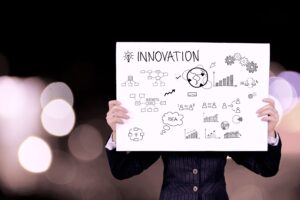
9. Conclusion
AI startups are on the very top of innovation, driving technologies further and thereby causing large impacts on many industry branches. AI startups are booming, thanks to new technological advancements, growing availability of data, and venture capital investment. These startups apply AI in directly scaling different industries, starting from healthcare to financial services, retail, transportation, and education, coming up with state-of-the-art technologies and solutions. Whilst a number of technical, competitive, regulatory, and data privacy issues continue to face AI start-ups, they endeavor to surmount them in different ways and scale their activities. Success strategies in this have included the development of solid teams, securing funding, penetration in the market, and the development of strategic partnerships. Coming to emerging trends and technologies, including generative AI, edge AI, and explainable AI, they all hold a bright future for AI startups. These are the drivers that will help entwine the associated ethical issues and consider responsible innovation as the understanding in which AI technologies are developed and effectively employed for societal beneficial use. As AI progressively develops itself in the direction of new-age views and creations, AI startups will always maintain the leadership in technological advancement, making way for innovation, new opportunities, development, and change.

 Cart is empty
Cart is empty 









